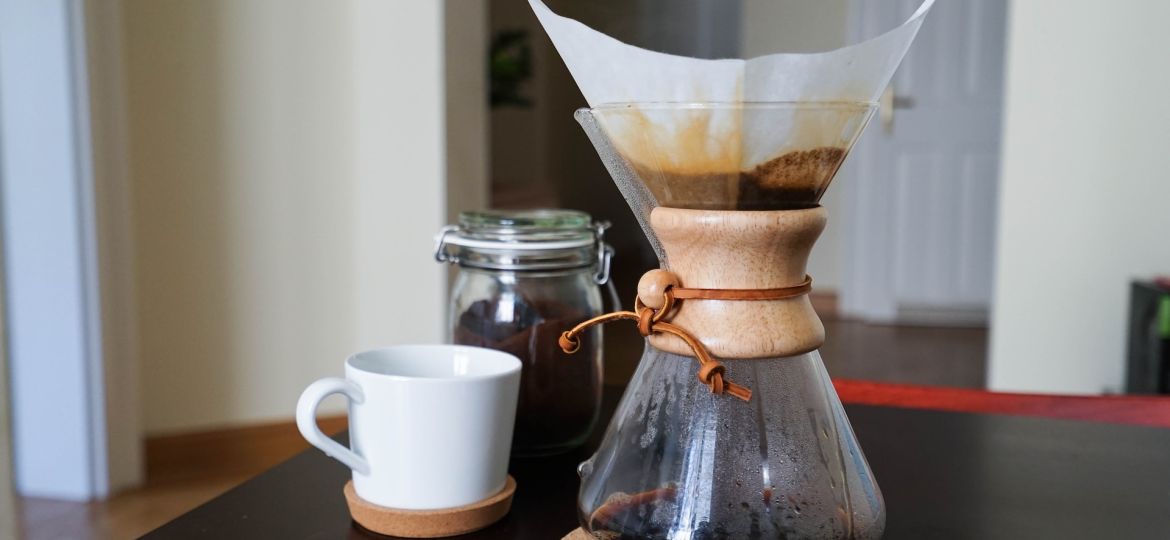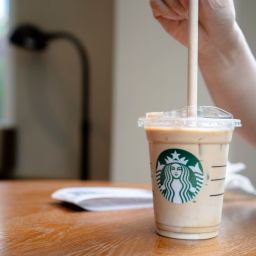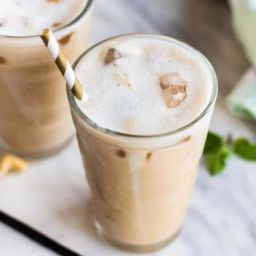
In the coffee industry, filter brewing holds a place of importance for several reasons:
- Consistency: Filter brewing allows for a consistent extraction of flavors, essential for both coffee enthusiasts and professionals.
- Versatility: It accommodates a wide range of brewing methods, each capable of highlighting different aspects of coffee.
- Accessibility: Filter brewing methods are generally easy to learn and accessible to a broad audience, making them popular among home brewers and cafes alike.
Understanding Brewing Methods: Immersion vs Percolation
When diving into filter coffee brewing, two primary methods emerge: immersion and percolation. Each method has a distinct impact on the coffee’s flavor and aroma.
Immersion Brewing
- Method: In immersion brewing, coffee grounds are fully submerged in water for the entire brewing time. This method includes popular techniques like the French Press and the AeroPress.
- Flavor Profile: Immersion brewing typically results in a full-bodied and rich coffee, often with a pronounced sweetness and a heavier mouthfeel.
- Impact on Aroma: While it enhances body and sweetness, immersion brewing might slightly mute the more delicate aromatic notes.
Percolation Brewing
- Method: Percolation involves water passing through coffee grounds, extracting flavors as it goes. This category includes methods like drip coffee and pour-over techniques, such as the Hario V60 and the Chemex.
- Flavor Profile: Percolation methods are known for producing a cleaner cup of coffee, with pronounced acidity and complex flavor profiles.
- Impact on Aroma: These methods tend to highlight the coffee’s aromatic complexity, offering a more nuanced sensory experience.
Both immersion and percolation have their unique appeal, and the choice often depends on personal preference and the desired characteristics in the final cup of coffee. Understanding these methods is crucial for any coffee enthusiast looking to explore the diverse world of filter coffee brewing.
Choosing the Right Brewer
Selecting the right filter coffee brewer can be a bit like finding the perfect pair of shoes – it needs to fit just right.
With a plethora of brewing methods available, each offering its unique twist on your morning cup, the decision can be overwhelming. Let’s break down the different types of brewers and what you should consider before making your choice.
Types of Filter Coffee Brewers
- Pour Over Brewers: Like the Hario V60 and Chemex, these brewers require a manual pour-over technique, offering control over every aspect of the brewing process.
- Drip Coffee Machines: For those who prefer convenience, these machines automate the brewing process, ensuring a consistent cup every time.
- AeroPress: A versatile and portable option, perfect for experimenting with both immersion and pressure brewing.
- French Press: Ideal for those who love a rich and full-bodied brew, the French Press is a classic immersion method.
- Siphon Brewers: For the more adventurous, these brewers provide a visually stunning brewing process and a unique taste experience.
Factors to Consider
When choosing your brewer, consider the following:
- Budget: Your budget is a key factor. While some brewers like the AeroPress are relatively affordable, others, especially high-end drip machines, can be a significant investment.
- Skill Level: Are you a beginner or a seasoned pro? Manual methods like pour-over require more skill and practice, whereas drip machines offer more ease and convenience.
- Desired Coffee Characteristics: Think about what you enjoy in a coffee. Do you prefer a clean, aromatic cup or a rich, full-bodied brew? Pour-over methods, for instance, are great for highlighting intricate flavors, while immersion methods like the French Press emphasize body and richness.
There’s no one-size-fits-all in coffee brewing. It’s all about what suits your lifestyle, taste, and how much time you’re willing to invest in brewing that perfect cup. Whether it’s the artful pour of a V60 or the push of a button on a drip machine, the right brewer for you is out there.
The Hario V60: For the Skilled Brewer
The Hario V60 is like the sports car of the coffee world – it’s sleek, efficient, and when used correctly, can produce an exceptional cup of coffee. Originating from Japan, this pour-over brewer has gained a cult following among coffee aficionados for its ability to extract a clean, flavorful cup.
What Makes the V60 Special?
- Design: The V60’s conical shape and spiral ridges allow for optimal air and coffee flow.
- Filter: Its paper filter is thinner than most, contributing to a cleaner cup and more pronounced flavors.
- Customization: The V60 offers complete control over brewing variables like water temperature, pouring speed, and technique.
Tips for Brewing with the V60
- Grind Size: Aim for a medium-fine grind. Too coarse, and you’ll under-extract; too fine, and you risk over-extraction.
- Water Temperature: Ideal brewing temperatures range between 195°F to 205°F.
- Pouring Technique: Start with a gentle spiral pour to evenly wet the grounds, followed by a steady, circular pour to maintain a consistent flow rate.
- Practice: Mastery comes with practice. Experiment with different variables to find your perfect cup.
The Kalita Wave: Consistency and Sweetness
The Kalita Wave is the friendly neighbor of coffee brewers. It’s approachable, forgiving, and a great choice for those just dipping their toes into the world of specialty coffee. With its flat-bottom design and three small holes, the Kalita Wave ensures an even and controlled extraction, making it less prone to user error.
Features of the Kalita Wave
- Design: The flat-bottom design promotes a more uniform extraction.
- Flow Rate: The three small holes regulate the flow rate, allowing for a more consistent brew.
- Material Options: Available in glass, stainless steel, and ceramic, each offering a different aesthetic and thermal properties.
Advantages for Less Experienced Brewers
- Forgiving Nature: The Kalita Wave is less sensitive to pouring technique, making it ideal for beginners.
- Consistent Results: Its design minimizes the risk of uneven extraction, leading to a more balanced cup every time.
- Versatility: Suitable for a range of grind sizes and brewing styles.
Whether you’re a seasoned pro with the V60 or a beginner starting with the Kalita Wave, both brewers offer unique experiences and delicious results. Dive into the world of pour-over coffee and discover the joys of brewing with these exceptional tools.
The Chemex: Brewing Larger Batches
The Chemex isn’t just a coffee brewer; it’s a piece of art. Known for its elegant design and superb functionality, the Chemex is perfect for brewing larger batches of coffee without compromising on quality. Its unique shape and thick filters make it a favorite among coffee enthusiasts.
Characteristics of the Chemex Brewer
- Design: The hourglass shape isn’t just for looks; it aids in the even extraction of coffee.
- Filters: Chemex uses thicker paper filters, which result in a cleaner cup with less oil and no sediment.
- Capacity: Available in various sizes, it’s ideal for brewing multiple cups at once.
Brewing with the Chemex
- Coffee Types: Light to medium roasts work best, highlighting their complex flavors.
- Grind Size: Aim for a medium-coarse grind – too fine, and you risk clogging the filter.
- Water Temperature: Keep it between 195°F to 205°F for optimal extraction.
- Pouring Technique: Start with a small amount of water to ‘bloom’ the coffee, then continue with a slow, circular pour.
The AeroPress: Versatility in Brewing
The AeroPress is like the Swiss Army knife of coffee brewers – compact, versatile, and capable of producing a wide range of coffee styles. From espresso-like concentrates to lighter brews, the AeroPress can do it all with its unique pressure brewing method.
Introduction to the AeroPress
- Design: Simple, durable, and portable, it’s made for coffee on the go.
- Method: Uses air pressure to extract flavors, resulting in a quick and efficient brew.
AeroPress Brewing Techniques
- Inverted Method: Flip it upside down for a longer steep time and fuller extraction.
- Dilution: Brew a concentrate and dilute with water or milk for a variety of coffee drinks.
- Experiment: Play with grind size, water temperature, and brewing time to find your perfect recipe.
The Syphon: An Artistic Approach
The syphon, or siphon, is the showstopper of coffee brewing methods. It looks more like a science experiment than a coffee brewer, and it’s sure to impress your guests. The syphon offers a theatrical way to brew coffee that’s as much about the spectacle as it is about the taste.
Description of the Syphon Brewing Method
- Design: Consists of two chambers where vapor pressure and vacuum produce coffee.
- Process: Heat forces water upwards to mix with coffee grounds, then coffee is drawn back down as it cools.
Ideal Scenarios for Using a Syphon
- Entertaining: Perfect for dinner parties or coffee tastings.
- Flavor Exploration: Excellent for experiencing the nuanced flavors of your coffee.
- Learning: Great for those interested in the science of coffee brewing.
Each of these brewing methods – the Chemex, AeroPress, and Syphon – offers a unique way to experience coffee. Whether you’re hosting a brunch, camping in the wilderness, or entertaining friends, there’s a brew method to suit your needs and impress your palate.
The Clever Dripper: A Hybrid Brewing Experience
The Clever Dripper stands out in the coffee world as a master of balance. It’s a unique hybrid that combines the best of immersion and drip brewing, making it a fantastic choice for those new to brewing or anyone who appreciates a clean yet robust cup.
Exploring the Clever Dripper
- Design: Resembles a standard drip cone but with a stopper at the bottom to control the steep time.
- Method: Combines full immersion brewing with the clean finish of a paper filter.
Benefits for Beginners and Coffee Aficionados
- Ease of Use: Simple to operate, making it great for beginners.
- Control: Offers control over steep time, allowing for a more tailored brewing experience.
- Flavor Profile: Produces coffee with a full body and clear flavors, highlighting the best of both brewing worlds.
FAQs
Filter coffee brewing, while straightforward, can sometimes be a maze of questions and misconceptions. Let’s clear some of them up.
Common Questions and Misconceptions
- Is filter coffee weaker than espresso? Not necessarily. The strength depends on the coffee-to-water ratio and extraction time.
- Do I need expensive equipment to brew good coffee? Absolutely not. Even with budget-friendly brewers like the Clever Dripper, you can make excellent coffee.
Tips for Beginners and Troubleshooting
- Start with Fresh Beans: The fresher the beans, the better the flavor.
- Experiment with Ratios: Find the right balance of coffee to water for your taste.
- Troubleshooting Bitterness: If your coffee is too bitter, try a coarser grind or shorter brew time.
Embracing the Diversity of Filter Brewing
Filter coffee brewing is a world brimming with diversity and flavor. From the precision of the V60 to the simplicity of the Clever Dripper, there’s a method for every taste and skill level. Remember, the journey to the perfect cup is all about experimentation and discovery. So, dive in, play around with different brewers and techniques, and most importantly, enjoy every sip of your coffee adventure!
Read more about How to Brew Good Coffee: Fundamentals.









